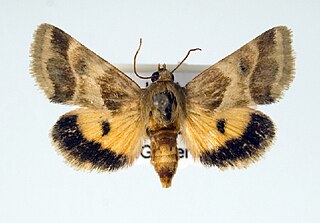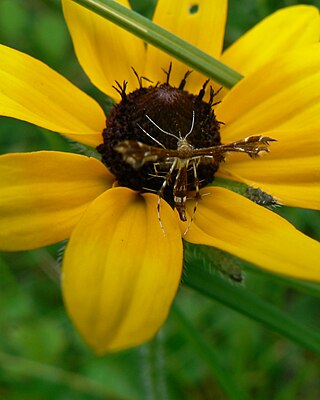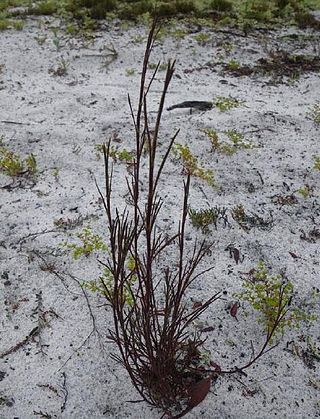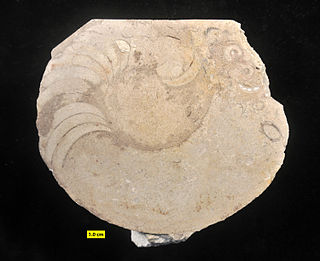
Chives, scientific name Allium schoenoprasum, is a species of flowering plant in the family Amaryllidaceae that produces edible leaves and flowers. Their close relatives include the common onions, garlic, shallot, leek, scallion, and Chinese onion.

Sorrel, also called common sorrel or garden sorrel, is a perennial herbaceous plant in the family Polygonaceae. Other names for sorrel include spinach dock and narrow-leaved dock.

Yucca is a genus of perennial shrubs and trees in the family Asparagaceae, subfamily Agavoideae. Its 40–50 species are notable for their rosettes of evergreen, tough, sword-shaped leaves and large terminal panicles of white or whitish flowers. They are native to the Americas and the Caribbean in a wide range of habitats, from humid rainforest and wet subtropical ecosystems to the hot and dry (arid) deserts and savanna.

Smilacaceae, the greenbriers, is a family of flowering plants. While they were often assigned to a more broadly defined family Liliaceae, most recent botanists have accepted the two as distinct families, diverging around 55 million years ago during the Early Paleogene. One characteristic that distinguishes Smilacaceae from most of the other members of the Liliaceae-like Liliales is that it has true vessels in its conducting tissue. Another is that the veins of the leaves, between major veins, are reticulate (net-shaped), rather than parallel as in most monocots.

Quercus agrifolia, the California live oak, or coast live oak, is a highly variable, often evergreen oak tree, a type of live oak, native to the California Floristic Province. It may be shrubby, depending on age and growing location, but is generally a medium-sized tree. It grows west of the Sierra Nevada mountain range from Mendocino County, California, south to northern Baja California in Mexico. It is classified in the red oak section of oaks.

Rudbeckia hirta, commonly called black-eyed Susan, is a North American flowering plant in the family Asteraceae, native to Eastern and Central North America and naturalized in the Western part of the continent as well as in China. It has now been found in all 10 Canadian Provinces and all 48 of the states in the contiguous United States.

Salix discolor, the American pussy willow or glaucous willow, is a species of willow native to North America, one of two species commonly called pussy willow.

Schinia, commonly called flower moths, is a large genus of moths belonging to the family Noctuidae. The genus has a Holarctic distribution with the vast majority of species being found in North America, many with a very restricted range and larval food plant.

Schinia lynx, the lynx flower moth, is a moth of the family Noctuidae. The species was first described by Augustus Radcliffe Grote in 1881. It is found in North America from Wisconsin, southern Ontario, Quebec and Maine, south to Florida and Texas. Records include Colorado, Iowa, Kansas, Nebraska, New York, Maryland, Oklahoma and Oregon.

Schinia nundina, the goldenrod flower moth, is a moth of the family Noctuidae. The species was first described by Dru Drury in 1773. It is found in North America from Minnesota to southern Ontario and Nova Scotia, south to central Florida and southern Texas. Records include Arizona, Kansas, Nebraska, New York, Maryland, Oklahoma and South Carolina.

Schinia nubila, the camphorweed flower moth or brown flower moth, is a moth of the family Noctuidae. The species was first described by Herman Strecker in 1876. It is found from the US states of Oklahoma to New Jersey, south to Florida and Texas. Its range is expanding in the northeast. Furthermore, recorded from Colorado, Kansas, Oklahoma, Arkansas, North Carolina, South Carolina and Maryland.

In plant morphology, thorns, spines, and prickles, and in general spinose structures, are hard, rigid extensions or modifications of leaves, roots, stems, or buds with sharp, stiff ends, and generally serve the same function: physically deterring animals from eating the plant material.

Geina tenuidactyla, the berry plume moth or Himmelman's plume moth, is a moth of the family Pterophoridae. The species was first described by Asa Fitch in 1854. It is found in North America, including Mississippi, Massachusetts, New York, Delaware, Maryland, West Virginia, Illinois, Ontario, Colorado, Nevada and California.

Polygonum basiramia is a rare species of flowering plant in the knotweed family known by the common names wireweed, hairy wireweed, purple wireweed, and Florida jointweed. It is endemic to Florida in the United States, where it is limited to the central ridges of the peninsula, including the Lake Wales Ridge. It is threatened by the loss and degradation of its habitat. It is a federally listed endangered species of the United States.

Polygonum dentoceras is a rare species of flowering plant in the knotweed family known by the common names sandlace, woody wireweed, and Small's jointweed. It is endemic to Florida in the United States, where it is limited to the central ridges of the peninsula, including the Lake Wales Ridge. It is threatened by the loss and degradation of its habitat. It is a federally listed endangered species of the United States.

Synchlora aerata, the wavy-lined emerald moth or camouflaged looper, is a species of moth of the family Geometridae. The species was described by Johan Christian Fabricius in 1798. It is found in the United States and Canada.

Conradina grandiflora is a species of flowering plant in the mint family known by the common name largeflower false rosemary, or large-flowered rosemary. It is endemic to Florida in the United States, where it occurs on the Atlantic coastal ridge. Its distribution spans Brevard, Broward, Dade, Highlands, Indian River, Martin, Osceola, Palm Beach, Polk, St. Lucie, and Volusia Counties.

Goldringia is an extinct nautilid of the Rutoceratidae family that lived during the Middle Devonian. It is known from New York, Ohio, and Indiana in the United States.
Polygonum delopyrum, the fringed jointweed or hairy jointweed, is a plant species endemic to Florida. It is found in pinelands and sandy pine barrens at elevations less than 50 m, in central and southern parts of the state.
Dichomeris bolize, or Glaser's dichomeris moth, is a moth in the family Gelechiidae. It was described by Ronald W. Hodges in 1986. It is found in the United States, where it has been recorded from Nebraska, Connecticut, Florida, Maryland, Massachusetts, New Jersey, New York, North Carolina and Texas.


















